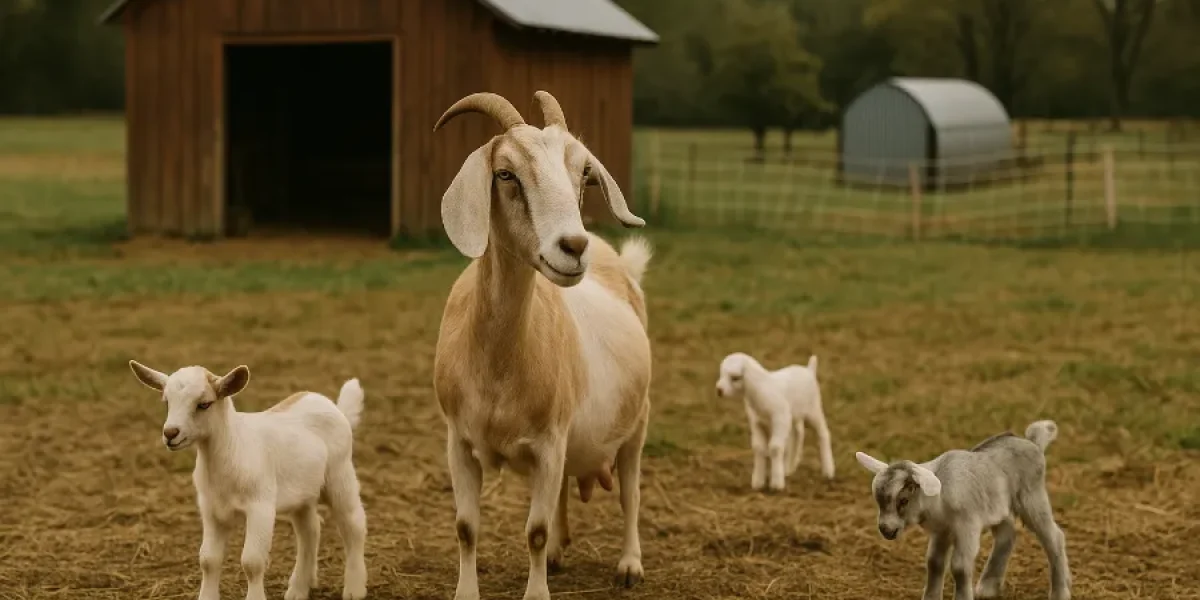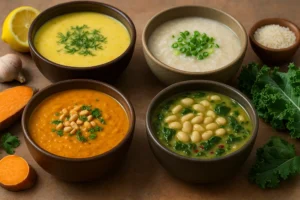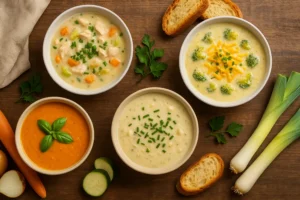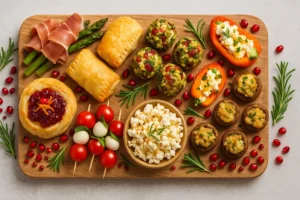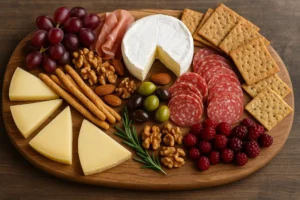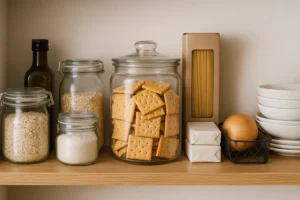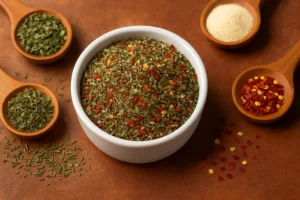When I first started my homestead, I never imagined that goat milk production would become the foundation of my most rewarding and profitable ventures. What began with two curious Nubian does in a small pen has now grown into a small but mighty dairy setup that fuels everything from cheese to lotion.
Goat milk production isn’t just about filling buckets — it’s about turning every drop into opportunity. Whether it’s goat milk yogurt, cheese, or even caramels, the possibilities are endless when you combine creativity with consistency. Over the years, I’ve learned which products are truly worth the effort, which sell best, and which ones keep customers coming back for more.
If you’ve ever wondered how to build a thriving business right from your barnyard, here’s my guide to the best homestead goat milk business ideas — the ones that are practical, profitable, and deeply fulfilling.
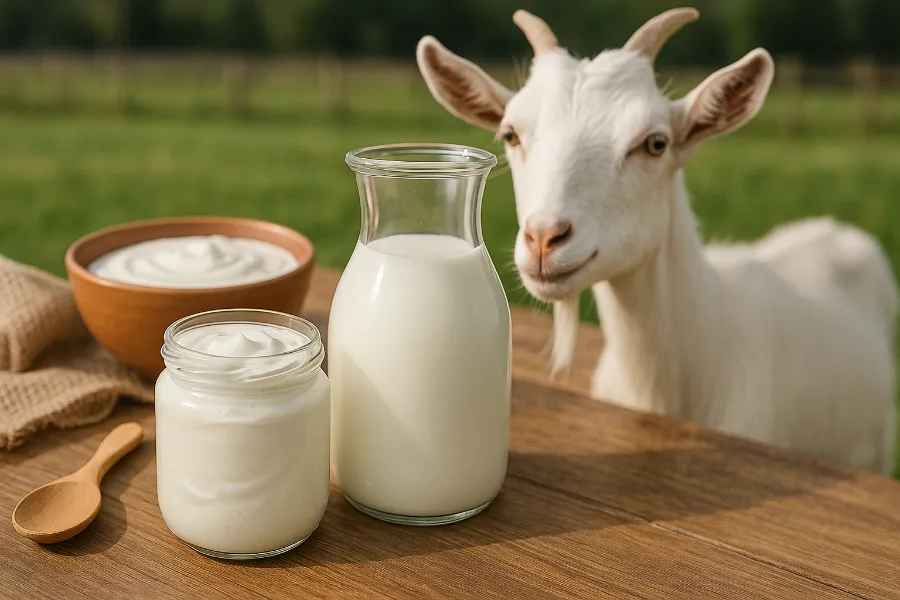
Goat Milk Farming: The Heart of Every Homestead Venture
Every successful product begins with healthy, well-cared-for goats. Goat milk farming isn’t about volume — it’s about quality.
When I first started, I thought “more goats = more milk.” But experience taught me that healthy, stress-free goats produce richer milk and more consistent yields. My daily routine revolves around three things: nutrition, milking rhythm, and cleanliness.
- Feed: Goats thrive on quality alfalfa or grass hay with access to loose minerals. I also give black oil sunflower seeds for glossy coats and milk richness.
- Milking: Twice a day, same time, every day — goats love routine.
- Hygiene: Clean udders, sanitized buckets, and quick chilling make all the difference.
Most dairy breeds like Nubians, Alpines, and Saanens produce between ½ to 1½ gallons per day, which is plenty to start crafting your own product line.
Once your herd is happy and producing, it’s time to decide where to focus your milk — and that’s where the fun begins.
Goat Cheese: The Classic That Never Goes Out of Style
If I could only make one product from goat milk for the rest of my life, it would be goat cheese.
The first time I made a batch of soft chèvre, I was hooked — not just on the taste, but on the process. With a few gallons of milk, a bit of starter culture, and some patience, I could create something gourmet right in my kitchen.
Why it works:
- People love fresh, local cheese — especially when they can meet the goats behind it.
- It’s one of the most profitable goat milk products.
- You can diversify easily: chèvre, feta, herbed logs, or aged rounds.
A gallon of milk yields roughly one pound of cheese, which can sell anywhere from $15 to $30 per pound depending on your market. And if you add herbs or honey, you can double your appeal.
For homesteaders looking for a high-value, repeat-customer product, goat cheese remains unbeatable.
Goat Milk Yogurt: Creamy Simplicity That Sells Itself
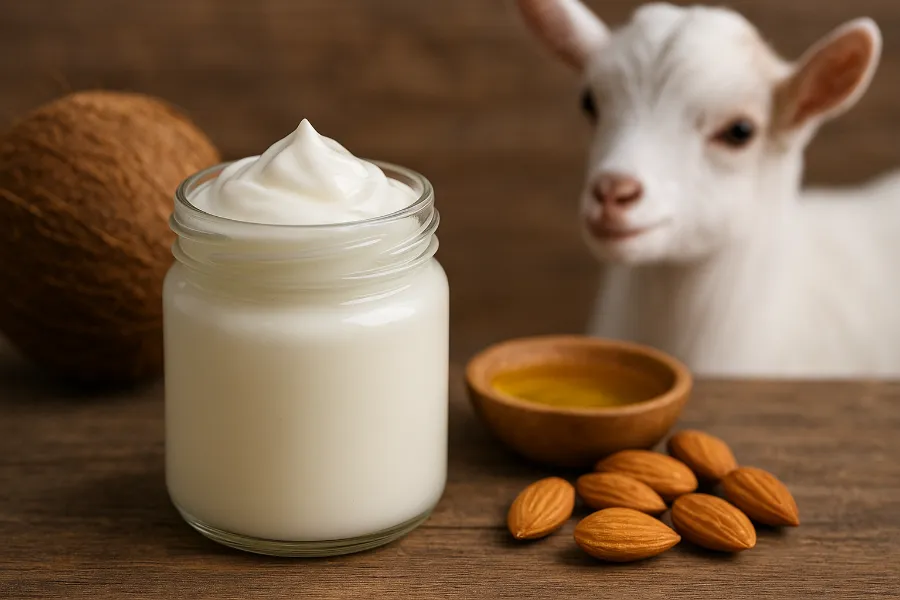
The next evolution in my goat milk journey was goat milk yogurt. It’s easy to make, nutrient-rich, and wildly popular among people who can’t tolerate cow’s milk.
I started selling jars of plain and vanilla yogurt at my local farmers’ market, and they flew off the table before noon. The secret is consistency — smooth texture and clean flavor win every time.
To make it:
- Heat milk to 180°F.
- Cool it to 110°F.
- Add starter culture.
- Let it incubate for 6–8 hours.
Homemade goat milk yogurt is thick, tangy, and delicious — perfect with honey or fruit. It’s also one of the best “gateway products” for new customers who are just learning to appreciate goat milk.
Goat Milk Kefir: The Probiotic Powerhouse
Right after yogurt, I discovered the power of goat milk kefir — a lightly fermented, drinkable dairy that’s become a staple in health-conscious circles.
I started making kefir because I wanted to use up extra milk, but it quickly became one of my best sellers. Kefir grains are easy to maintain and multiply naturally, meaning you can keep producing without constantly buying new cultures.
Goat milk kefir is loaded with probiotics, easier to digest than cow’s milk, and incredibly versatile. You can sell it plain, flavored, or blended into smoothies. Customers love its tangy taste and its reputation as a gut-healing drink.
It doesn’t require expensive equipment, and with the right labeling, it can sell for $8–$10 per bottle.
Goat Milk Ice Cream: Turning Dairy into Dessert Gold
When I first churned my first pint of goat milk ice cream, I didn’t realize it would become such a hit. The texture is velvety, the flavor subtle, and the natural sweetness of the milk makes it a dream for creative recipes.
Goat milk ice cream appeals to both the artisan dessert crowd and those with mild dairy sensitivities. Once people taste it, they’re hooked.
Some of my top flavors include:
- Honey lavender
- Salted caramel
- Strawberry-basil
- Dark chocolate chèvre
While ice cream requires a pasteurizer and freezer setup, it’s worth the investment. Selling at local events or through farm-to-table stores can yield strong returns — up to $12 a pint for small-batch products.
Goat Milk Caramels: Sweet, Small-Batch Luxury
There’s something special about goat milk caramels — they’re rustic, rich, and melt-in-your-mouth good.
They started as a way for me to use leftover milk, but quickly became a best-seller around the holidays. With their creamy texture and deep, buttery flavor, they make perfect gifts and add-on items at market booths.
To make them, you’ll need just milk, sugar, butter, and time. Package them in simple kraft paper with a farm logo, and you’ve instantly got a high-end, handmade product that people love to gift.
A single batch can yield several hundred caramels, and you can sell small bags for $6–$10. Not bad for something that starts with milk you’d otherwise feed to the pigs.
Goat Milk Lotion: From Barn to Boutique
When the milk fridge was overflowing one spring, I decided to experiment with goat milk lotion. I never looked back.
Goat milk lotion is smooth, nourishing, and packed with natural fats and vitamins that the skin loves. People with eczema or dryness often seek it out specifically.
To make it, I blend goat milk with oils like coconut or almond, plus emulsifying wax and a preservative. The result is a thick, silky cream that feels luxurious but rustic — just like the farm it comes from.
Adding scents like lavender, honey, or oatmeal transforms a simple product into a premium line. At markets, lotion sells almost as fast as soap. I price mine between $10 and $18 per bottle, depending on size and packaging.
Goat Milk Soap: The Homestead Essential That Always Sells
If you’ve ever made goat milk soap, you know how satisfying it is to see those creamy bars cure on the rack.
Soap was one of my first products, and it remains my steadiest source of income. Each bar tells a story — the milk came from goats I feed and milk myself, and customers love that personal connection.
Soap making is equal parts art and chemistry. Once you master the balance of lye, milk, and oils, you can craft endless varieties:
- Oatmeal & honey for gentle cleansing
- Lavender for relaxation
- Charcoal for detoxifying
The beauty of goat milk soap is that it keeps indefinitely and ships well. You can sell bars for $6–$10 each, and once people fall in love with your soap, they tend to come back for more.
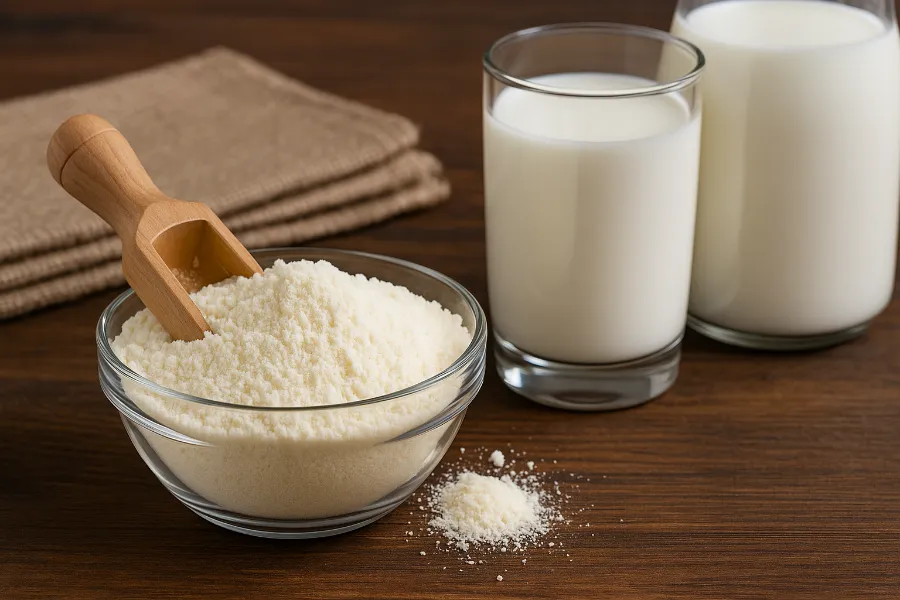
Goat Milk Powder: Long Shelf Life, Big Opportunity
If you’re thinking long-term, goat milk powder offers a way to scale your business. It’s the perfect product for homesteaders looking to reach a wider audience without worrying about refrigeration or spoilage.
Powdered goat milk is made by spray-drying fresh milk into a fine, shelf-stable powder that lasts up to a year. It’s great for baking, skincare, or reconstituting for daily use.
You can sell it in small jars or bags at $15–$25 per pound, or wholesale it to other soap and lotion makers. While it requires access to specialized drying equipment, many small farms partner with regional processors to handle this step.
Building a Goat Milk Brand That Stands Out
Over time, I realized that success in goat milk production isn’t just about what you make — it’s about how you tell your story.
Customers want to know where their food (and skincare) comes from. They want authenticity — not factory polish. That’s your biggest advantage as a homesteader.
A few lessons I’ve learned along the way:
- Be visual. Share photos of your goats and process on social media.
- Be transparent. Customers love seeing the real work behind each product.
- Be consistent. A recognizable label and logo go a long way.
I also found that creating bundled sets (like soap + lotion combos or cheese + caramel boxes) increased sales dramatically. People love the idea of taking home a piece of the homestead.
Challenges of Goat Milk Production (and How I Overcame Them)
Like any farm-based business, there are hurdles. Milking twice a day, managing breeding schedules, and meeting regulations can test your patience.
Here are the biggest challenges I faced — and how I handled them:
- Regulations: I started with products that fell under my state’s cottage food laws before moving into licensed dairy products.
- Milk supply dips: By staggering breeding, I ensured someone was always in milk.
- Marketing: Farmers’ markets were my first sales outlet. Later, I built a simple website and started offering local delivery.
The learning curve is steep at times, but the satisfaction of creating something from your own herd makes it worth every step.
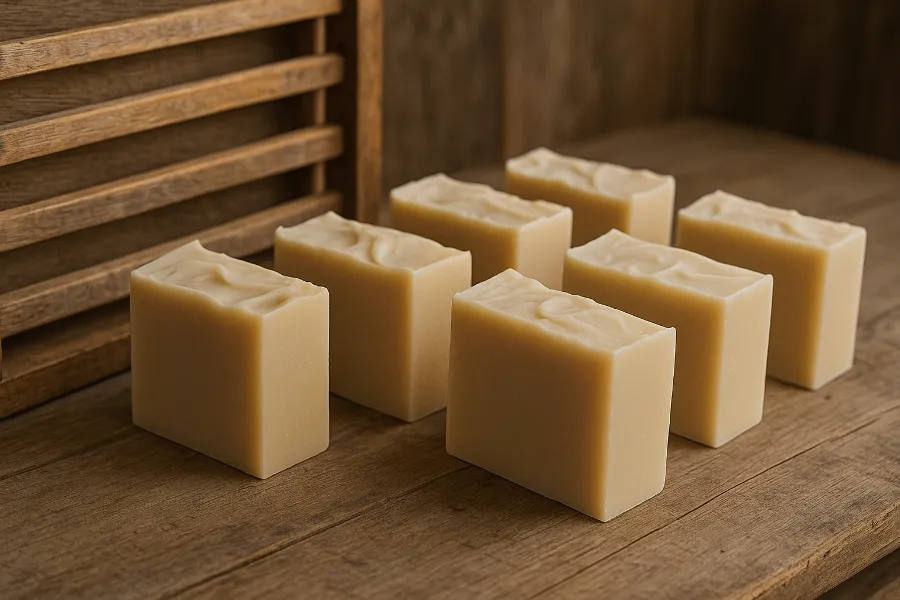
Why Goat Milk Production Fits the Homestead Lifestyle
For me, goat milk production represents everything homesteading is about — sustainability, creativity, and community. It’s a way to make a living while staying rooted in what matters most: good food, good animals, and honest work.
Every product I make — from creamy chèvre to silky lotion — reminds me that simple things can be extraordinary when made with care.
And perhaps that’s why goat milk businesses continue to thrive. People crave that authenticity, that connection to real life, and that’s something you can’t mass-produce.
Final Thoughts
If you’ve ever thought about building a business around your homestead, goat milk production is one of the most rewarding paths you can take. Whether it’s goat cheese, yogurt, kefir, ice cream, soap, lotion, or caramels, there’s a market waiting for your handmade touch.
Start small, master your craft, and let your story guide your brand. You’ll be amazed how far a few goats — and a whole lot of heart — can take you.
FAQs
Goat milk production refers to raising dairy goats for fresh milk and turning that milk into value-added products like cheese, soap, and lotion. It’s a sustainable and profitable homestead business.
Popular dairy breeds include Nubian, Alpine, Saanen, and LaMancha. They produce high-quality milk with excellent butterfat content ideal for cheese and skincare products.
A healthy dairy goat typically produces between half a gallon and one and a half gallons per day, depending on diet, breed, and milking consistency.
Cheese, soap, lotion, and caramels are top sellers due to high demand and long shelf life. Yogurt, kefir, and ice cream also perform well at local markets.
Regulations vary by state. Many homesteaders start under cottage food laws, then transition to licensed dairy or skincare production as their business grows.
Build a strong brand by highlighting your goats, your process, and your commitment to natural, small-batch quality. Farmers’ markets, social media, and local stores are great outlets.
Yes. With careful herd management and diversified products, goat milk production can provide steady income while supporting a self-sufficient lifestyle.

